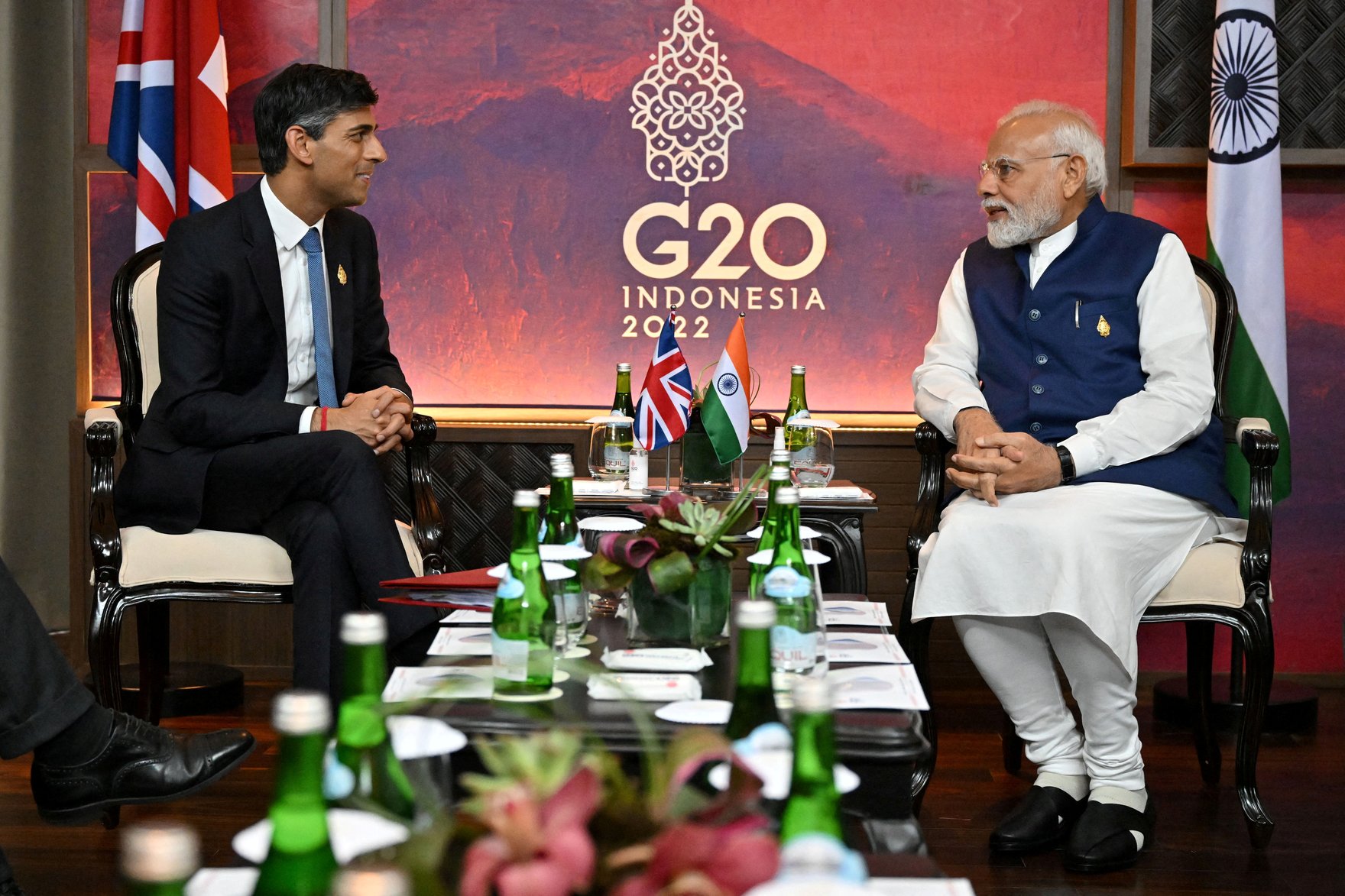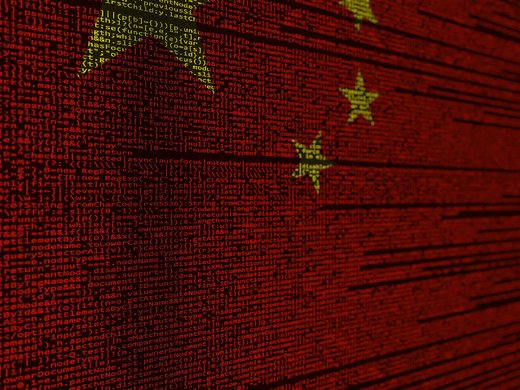The size, scope and impact of the digital economy has greatly increased in the years since the Group of Twenty (G20) made its debut at the leaders’ level in 2008. Now, the terms disinformation campaign and chip wars have entered the global governance lexicon as policy makers at all levels of government grapple with managing a phenomenon that is not fully understood, is still expanding, and has geopolitical and geoeconomic implications. The issue appears tailor-made for the G20. But, as we argue in this essay, while the G20 provides the right table and contains the right players to advance on issues related to the digital economy, the grouping itself is in disarray. Plurilateral alternatives lie in wait as less efficient but still effective ways to proceed. Big hopes rest on India’s stewardship of the G20 in 2023. The country has the heft and gravitas in the digital economy space, but also more broadly, to make a difference, thus giving the G20 new life.
Dimensions of the Digital Economy and Why They Matter
Although these terms are sometimes used interchangeably, the digital economy, the data economy and the intangibles economy are not strictly the same. As we argue, an initiative patterned on the United Nations’ System of National Accounts could standardize terminology and create a taxonomy of concepts and conventions around their measurement. Still, what we do know buttresses the dominance (still growing) of digital issues in economic activity and policy.
In 1975, intangible assets represented just one-sixth of the market value of companies in the S&P 500 Index, with tangible assets comprising the other five-sixths. By 2020, the ratios were more than reversed, with intangibles accounting for 90 percent of market value. Although consistent data do not exist to make global comparisons, investment in intangibles overtook investment in tangibles in the mid-2000s in the European Union and the United States. It is evident that data and digital technologies are ubiquitous and economic and social drivers around the world.
Firms driven by intangible assets (and by extension, industries and countries dominated by intangible assets) have characteristics that are known separately to economists but have not necessarily come together in the manner that they now have, with implications for a range of economic policies. In the intangibles area — be it software development, mineral exploration, the creation of entertainment or building a brand — participants face high upfront costs and, associated with this, high risk of failure. But once success is achieved, it is sweet — marginal costs of reproduction are zero or near-zero, and if protected by any form of intellectual property, profits are basically economic rent. There is a first-mover advantage that is accentuated if the product or industry standards are lagging or developed concomitantly. As a consequence, the intangibles economy is more driven by monopolistic, oligopolistic and strategic behaviour than a traditional manufacturing economy.
Standards — the technical and process “handshakes” that provide conformity across diverse products, production and distribution — are the underappreciated ground game here. For example, the standardization of the dimensions of the shipping container through ISO 668 in 1968 is credited as one of the principal drivers of globalization. In the information and communication technology sector, between 1998 and 2012 alone, some 435 consortia were created to develop and lock in standards. These are neither fully inclusive in the producers and technologies they represent, nor neutral in their economic impacts across sectors or companies.
Finally, success in this area is underwritten by economies of agglomeration and geopolitical strategy. In the high-tech sector “clustering,” be it of firms, talent, finance or support services, an active national strategy to nurture and build out the sector is key to understanding the winners and the “collective” character of innovation. This is most apparent in the data sphere. Big data has been described as the new oil, powering 5G (fifth-generation mobile) networks and decision-making systems worldwide, and also as the new plutonium: “amazingly powerful, dangerous when it spreads, difficult to clean up and with serious consequences when improperly used.”
Big data generate in-built natural economies of scale — the more of it you have, the better your product; the better your product, the more numerous the users; the more numerous the users, the more data you have. Little wonder that its plutonic nature and economic characteristics, coupled with deviating value systems around its use, have resulted in the balkanization of global data zones. The state-centric China zone and the firm-centric US zone are mirror images of each other: in neither case do individuals have sovereignty or control over their personal data. By contrast, the European Union’s General Data Protection Regulation (GDPR) offers a higher degree of control to individuals on questions of privacy and the use of their data. It also serves as the model for data laws at the local level (for example, the state of California) and in countries — such as India — outside the three big data zones.
Evolution of Digital in G20 and Actions to Date
Nowhere do the words digital or data appear in the outcomes and documents of the inaugural meetings of G20 leaders in Washington, DC (2008), and at the London Summit (2009), which issued the Global Action Plan for Recovery and Reform. The absence of any need or utility to refer to digital, data or digitization at all as part of a 2009 global economic framework illustrates how much has changed over the last dozen years.
The evolution of G20 thinking during the last decade, in addition to rapid advances in technology itself, was prompted by G20 initiatives such as those on global tax coordination (Base Erosion Profit Shifting) and on financial regulation and inclusion. These issues helped make the global breadth of the digital transformation and the need for broader frameworks clear to decision makers.
While the G20 and its membership are advancing digital discussions and taking some action, there is no evidence yet of substantive policy integration or coordination.
The importance of a broader digital framework in the G20 context came into focus when G20 digital ministers met for the first time in April 2017 and set out plans for “shaping digitialisation for an interconnected world,” including a road map for digitialisation. The German presidency also initiated the G20 Digital Economy Task Force the same year.
By the time of the Japanese presidency in 2019, a comprehensive and systematic approach to digital and data issues was taking clear form in the G20. Trade ministers issued a ministerial statement on trade and digital economy, which framed a broad “human-centered approach” well beyond trade, including free-flowing data with trust, ethical artificial intelligence (AI), governance innovation, digital security and inclusion.Later that year, G20 leaders established a framework for “Innovation: Digitialization, Data Free Flow with Trust” for those same issues, and issued a set of “G20 AI Principles.”
In 2021, under the Italian presidency, digital ministers established the G20 Digital Economy Working Group (DEWG), an upgrade to the 2017 task force. The DEWG, chaired by the current G20 presidency, produces an annual report that is coordinated across other work streams, and ensures follow-up on commitments. While the process is clear, the terms of reference prescribe only a general scope “to leverage digital technologies, through the sharing of information and views, and seeking an understanding on policies….” The bottom line is that it falls to each presidency to determine the focus for the working group each year, with light linkage to past and future G20 presidencies.
The DEWG met several times under the Indonesian presidency in 2022. The chair’s summary from the digital ministers’ meeting in September 2022 noted general agreement on the importance of digital connectivity, measuring digital skills/literacy and cross-country data flows. A chair’s summary is a weaker outcome than a joint statement, and is now feedstock for leaders at the Bali Summit. As an aside — but given the membership overlap — it is worth noting the BRICS (Brazil, Russia, India, China and South Africa) group established a new Digital Economy Working Group at the Beijing Summit in 2022.
There is no doubt that digital transformation has been further accelerated by the impacts of the COVID-19 pandemic and the widespread use and dependency on digital technologies. Advances in AI are in the news almost weekly, as are reports of cyberattacks and risks. A number of governments in the G20 are themselves considering new legislation or regulations at the heart of digital and data policy. While the G20 and its membership are advancing digital discussions and taking some action, there is no evidence yet of substantive policy integration or coordination and outcomes remain marginal. It would take significant effort and focus at the highest levels to change this.
A Way Forward
Despite the pessimism around global cooperation and the peculiar characteristics that lead to a winner-take-all mentality in the digital sphere, there is room for cautious optimism, driven by the tremendous gains to be had by all if a functional global governance regime were to be designed for digital issues. Put another way, a lack of cooperative governance leaves everyone potentially worse off.
Sustained and pointed diplomacy in this area has not yet been given a chance. In digital issues, we are where the world was broadly in 1944 at the dawn of the Bretton Woods conference. If a concerted effort is made, gains are possible — for example, the new global tax agreement finalized in late 2021. It is a step forward to harmonize tax practices for digital multinationals, but could be sharpened to address some of its flaws. The low level of minimum tax has been criticized as setting a low rather than adequate bar; high-income countries have priority in topping up taxes; and low- and middle-income countries must forgo existing and future digital service taxes in exchange for the new revenue-sharing formula contained in the agreement. India might take the lead in adding “real-time monitoring” of the implementation of this agreement and proposals to modify it over time as part of the remit of the existing G20 DEWG.
Despite the pessimism around global cooperation and the peculiar characteristics that lead to a winner-take-all mentality in the digital sphere, there is room for cautious optimism, driven by the tremendous gains to be had by all if a functional global governance regime were to be designed for digital issues.
The citizen-empowering ethos underlying the GDPR is widely accepted as a benchmark for data governance, and is reflected in laws the world over. The Indian stack — digital ID, e-payments, financial inclusion and health ID — is an example of a country outside the three data blocs applying sound citizen-oriented principles to digital policy. But there are broader issues to anticipate and sort out. One such is the current experimental approach to developing data standards and stacks that is occurring in the absence of a universally (or even plurilaterally) agreed-upon digital governance framework. Another is the ad hoc weaponization of the SWIFT electronic payments system through sanctions on, to date, Iran, North Korea, Russia and Venezuela without either an overarching framework for which global public goods are part of a sanctions regime in the digital era and which are not, or a dispassionate understanding of the longer-term consequences.
After the global financial crisis, the global community led by the newly created leaders’ G20 recognized the uniqueness of the situation and the inadequacy of existing institutions to fully address it, thus creating the Financial Stability Forum (now the Financial Stability Board). Global digital governance is analogous. The time has come to consider a Digital Stability Board to shape global standards, regulations and policies across the platform economy. This new body could offer advice on best practices, as well as insights about the regulatory and policy actions needed to address vulnerabilities in a timely manner. It could monitor risks arising from new technologies — including their impact on civil society — and develop regulatory and policy interventions to address them. It could ensure that its efforts complement the work of other institutions, such as the International Monetary Fund and the World Trade Organization (WTO), on central bank digital currencies (CBDCs) and e-commerce, for example.
In parallel to this more ambitious agenda, incremental and practical confidence-building measures can be initiated by a G20 during its Indian presidency: for example, pilots on data sharing and data pooling by sector (health research is a good place to start); a plurilateral agreement on e-commerce; norms around some forms of corporate data storage; and use of e-signatures in contracts.
Finally, while tentative and with limited country coverage, the Digital Economy Partnership Agreement (DEPA) currently in place between Chile, Singapore and New Zealand (and which Canada has asked to join) is a template for the next generation of economic agreements. DEPA goes beyond traditional trade agreements and their digital sections by directly addressing seamless digital trade, trusted data flows and trust-building in digital systems. The G20 could put its weight behind DEPA’s key features and, taking Canada’s lead, other members could seek to join while broadening and deepening it.
Together, these actions would provide impetus for the G20’s DEWG to move from discussion to operationalizing broad intent. This is not only a call to action for digital ministers. After all, many countries are still grappling with how to make this an explicit portfolio in Cabinet and government machinery more broadly. The DEWG will work best when they have the leaders’ support in working toward their stated intention of creating an inclusive framework to harness the potential of new technologies, one that goes beyond economic considerations alone.
Conclusion
Although the digital economy is a relatively new agenda, the G20 has recognized its importance in recent summits, but it has missed opportunities to advance in meaningful ways on its totality. Progress can and will be made, but this is not dependent on the G20. The maxim of the past decade-and-a-half in global economic governance (“If not the G20, who?”) at some point wears thin. Countries will proceed with their CBDCs and other digital plans. The e-commerce agreement at the WTO will continue to take shape. Countries will continue to make war and impose sanctions on their enemies. DEPA might thrive. Countries will try to regulate digital platforms individually and in a patchwork manner.
The G20 remains a potent potential vehicle for progress because of the agenda’s cross-cutting nature. Of course, not every fault line in the digital world is amenable to a “G20 solution.” The process of standard setting is mostly industry-led, and there is no certainty that a ready cooperative solution would emerge if the G20 were to attempt to corral the matter. But on the issues where the G20 can make a difference, India brings a weight to marshal and carry forward the discussion that few recent presidencies have had. If the substantive parameters of comprehensive global governance in digital issues emerge during India’s tenure as chief of the G20, and are implemented, the country will have shown it has truly arrived on the global stage while creating a lasting legacy in partnership with others.
This article was originally published as one of the essays in G20 in 2023: Priorities for India’s Presidency, part of the Global Policy-Observer Research Foundation series.



